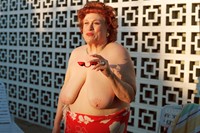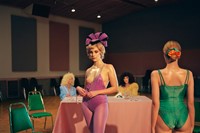Nadia Lee Cohen is only 28, but you’d be forgiven for thinking she’s a behemoth of image-making. One look at her debut book, Women, published by IDEA, and you’ll see why.
The fruit of six years’ labour, Women brings together 100 portraits of staggering power and beauty. Kept under wraps for the majority of that time, the project was carried out in secret, alongside her work as a director, and was completed in lockdown.
“The word ‘Women’ in this case is an idea related to ‘character’,” Cohen says of the title. “It doesn’t reside in the world we live in, nor does it share the same politics, beauty norms or values. It stands as a representation of strong femininity within a series of these 100 mise-en-scêne.”
The book sees Cohen capture people of all ages, shapes and sizes, in various states of undress. Each subject appears to be at total ease in front of the camera, unflinching and unapologetic in their femininity.
“Regardless of their assigned character, the level of nudity is determined by whatever the individual personally believes it is to feel ‘unclothed’,” the photographer says of the nudity in the book. “This naturally differs between subjects; however, it is, perhaps, the most harmonising thread that injects a universal feeling of strength to these images. The most important character trait being that these ‘Women’ are not weak, they feel empowered and, in turn, empower.”
Power is the key word here – these images vibrate with the stuff. They confront you. Command you. Compel you. Meet your gaze head on. And they are full of contradictions, too: simultaneously retro and modern, they draw on a legacy of British and American cinema, but feel new and current. Likewise they are staged and stylised, but at the same time real and irrefutably raw. Meanwhile, the women themselves display both a vulnerability and a strength, presenting a fictional character and also their true self, or at least a version of it. It’s hard to look away and even harder not to feel something.
A gold clothbound hardback, the book itself is a beautiful object in its own right, featuring a foreword by Ellen von Unwerth who praises Cohen’s talent for “skilfully interweaving the equally fascinating creepiness and glamour inherent of American culture”, and an introduction by Alessia Glaviano of Vogue Italia.
Here, Cohen discusses this project in further detail, expanding on the process of completing the book and the women at the centre of it.
Ted Stansfield: Please can you introduce this book?
Nadia Lee Cohen: You might have thought I’d had enough time to think of something a little more profound to say as a response … but here’s what I have: it’s my first photo book and it’s incredibly special to me. It’s a book of stories featuring people I admire in one way or another, each filling the role of an imagined fictional narrative.
TS: It is the result of more than six years of work. Can you tell me about the origins of the book, the process of putting it together, and how it feels to have completed it?
NLC: Honestly, it’s the largest sense of relief I’ve ever felt. I probably could have gone on for another 16 years but for a much-needed motivational intervention. I started it in university and had the unrealistic idea that I could complete it in a year. How wrong this was. My tastes changed both personally and as an image-maker. Also, taking on work as a director as a means to fund the book slowed down its progress. Though without sounding all doom and gloom, this element in particular I think aided the creation of the imagery, there was an elevation in terms of preconceived narrative, set design, lighting and general character creation. The concepts were more thoughtfully conceived like film stills rather than still images and I was no longer shooting in my mum and dad’s shed.
The main frustration was trying to complete the book while simultaneously attempting to keep each image secret. This proved pretty difficult, as people would ask ’how’s the book coming?’ and I was unable to show them anything I’d shot. In a world where we’re so used to instant recognition as a response to imagery, this lack of validation was slightly nerve wracking in terms of wondering if what I’d captured was worthy of a photo book.
The pandemic played a pretty considerable part in the book’s completion. Spending weeks inside forced me to face the daunting task of printing and arranging the images around my LA apartment like some sort of crime scene web. Pinning notes to them and obsessing about what needed to be altered, what was missing, have I used this wig too many times? Etc ...
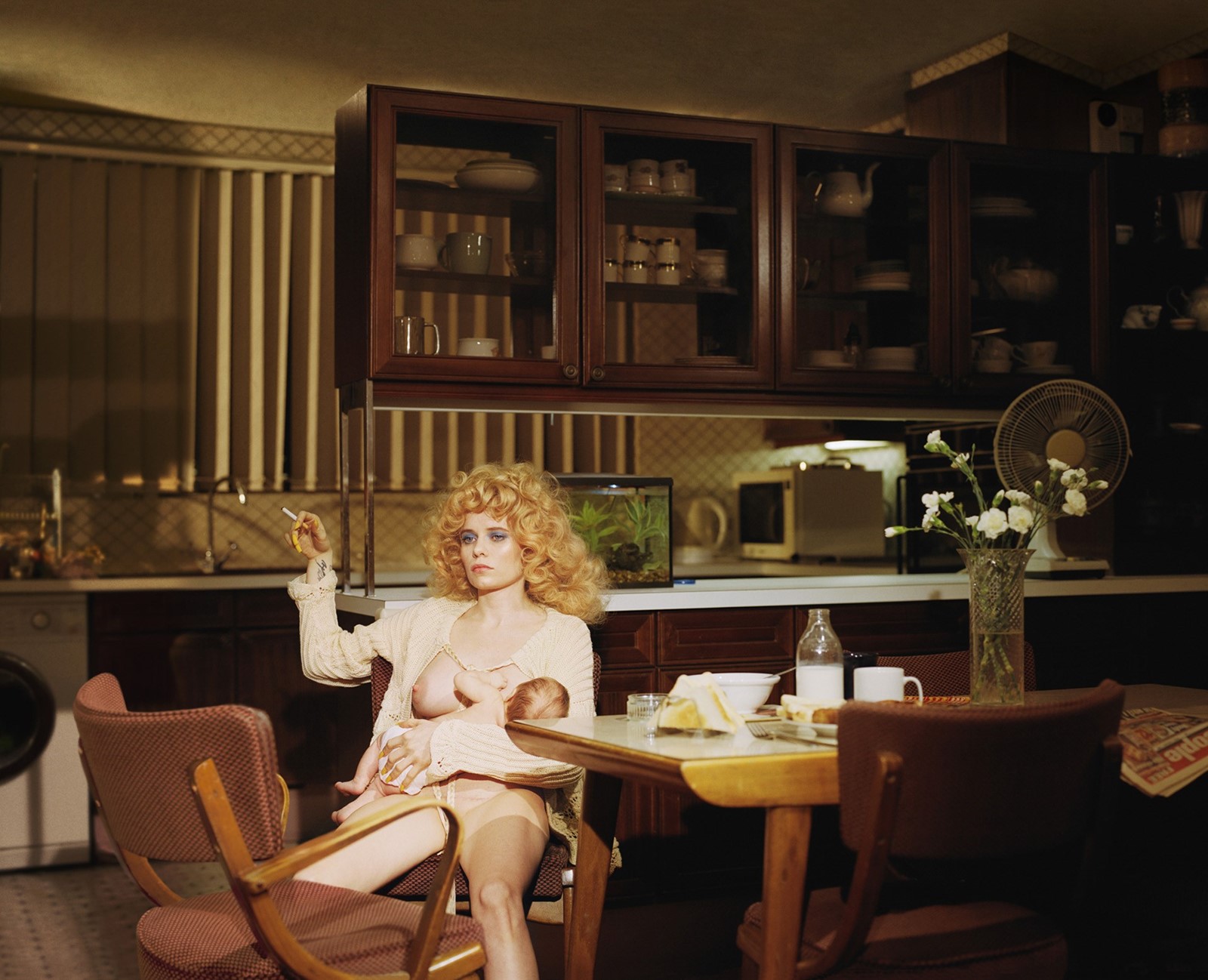
TS: Despite the fact that the images were shot over multiple years and in multiple locations, there’s such a strong sense of cohesion to them. How did you achieve this?
NLC: Thank you. The stories are pretty similar in tone, although there are differing themes of mundanity, loss, elation, etc, there is a harmonious thread of strength I think that unites them.
“The stories are pretty similar in tone, although there are differing themes of mundanity, loss, elation, etc, there is a harmonious thread of strength I think that unites them” – Nadia Lee Cohen
TS: What is your relationship to these women? How did you cast them and what qualities do you think they share?
NLC: On a personal level, some are extremely close friends, others are people I have only met once with the intention of photographing them for the book; together they are all individuals that I admire in one way or another. On a fictional level I feel incredibly connected to their respective characters. The catalyst behind these imagined scenarios were the models themselves, in effect they were the initial spark and inspiration for the birth and progression of each character.
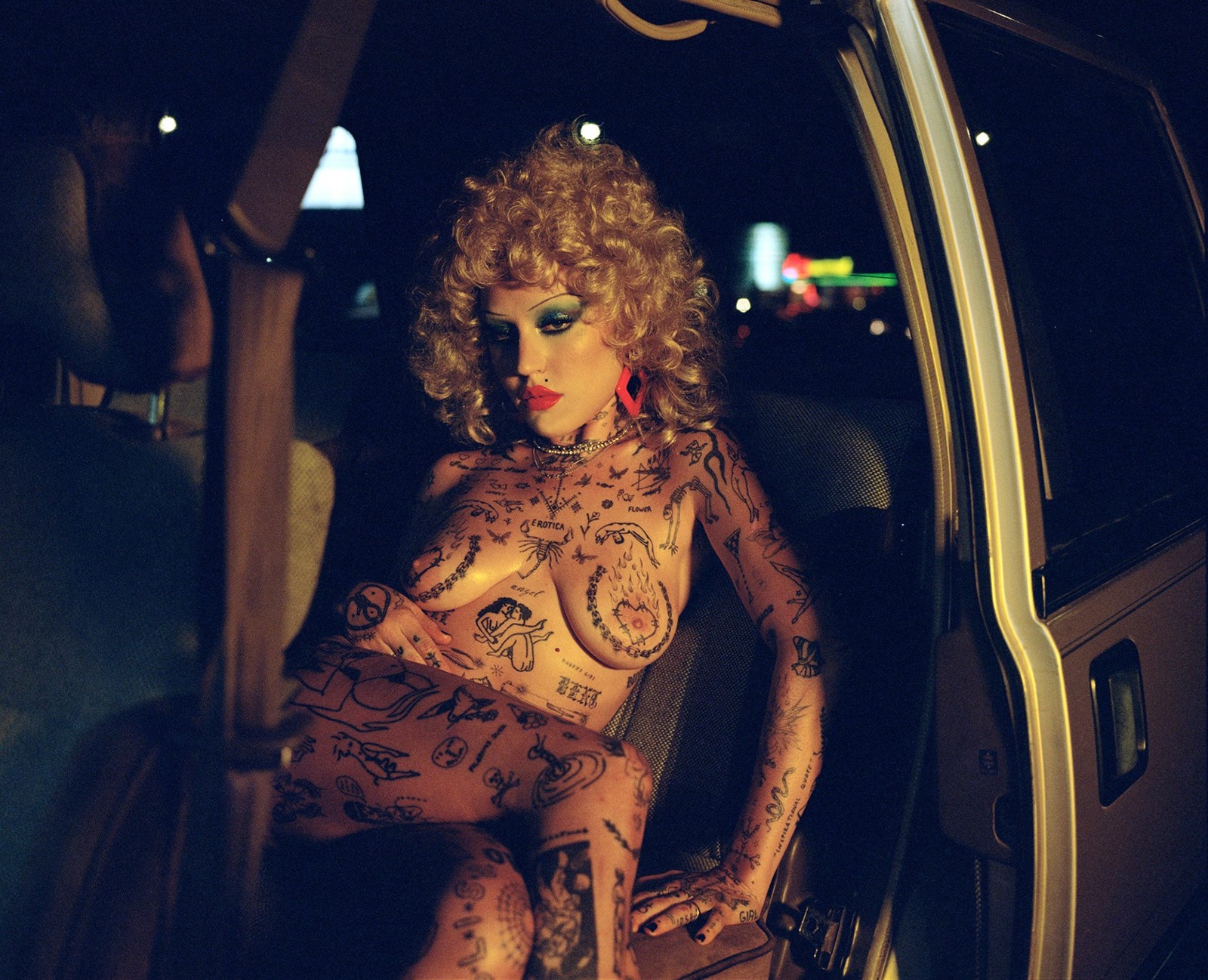
TS: There’s such a sense of intimacy to these images. A physical intimacy, yes, but an emotional one too. Is that fair? As a photographer, were you removed from your subjects or were (or are) you emotionally involved?
NLC: Emotionally involved in their fictional lives, yes. Even if the subject was a close friend, without risk of sounding like a low-budget ’medium’, there was perhaps a moment where we both disconnected and a new devised character entered the room and took their place. In certain cases after the wigs, make-up and costume design was complete we’d say shall we call them Shirley? Shall we call them Pam? When referring to this fictional creation staring back at us. The point is they weren’t playing themselves, I find when someone’s appearance is altered (at times) almost beyond recognition this brings out something that neither of you recognise in the photograph, even if you know each other very well, that seems to be where the magic is.
TS: Unlike a series of images of women by a male photographer, there is that sense of involvement, I think, and empathy in this book. What is your understanding of the female gaze and how is that expressed in this book?
NLC: It was a collaborative process in the sense that it was important for me to understand and empathise through each situation what the model felt comfortable with, then together we devised a way to work that into their respective character. I understand first-hand the vulnerability felt in posing, especially without the comfort and barrier of clothing, so there was a mutual awareness throughout.
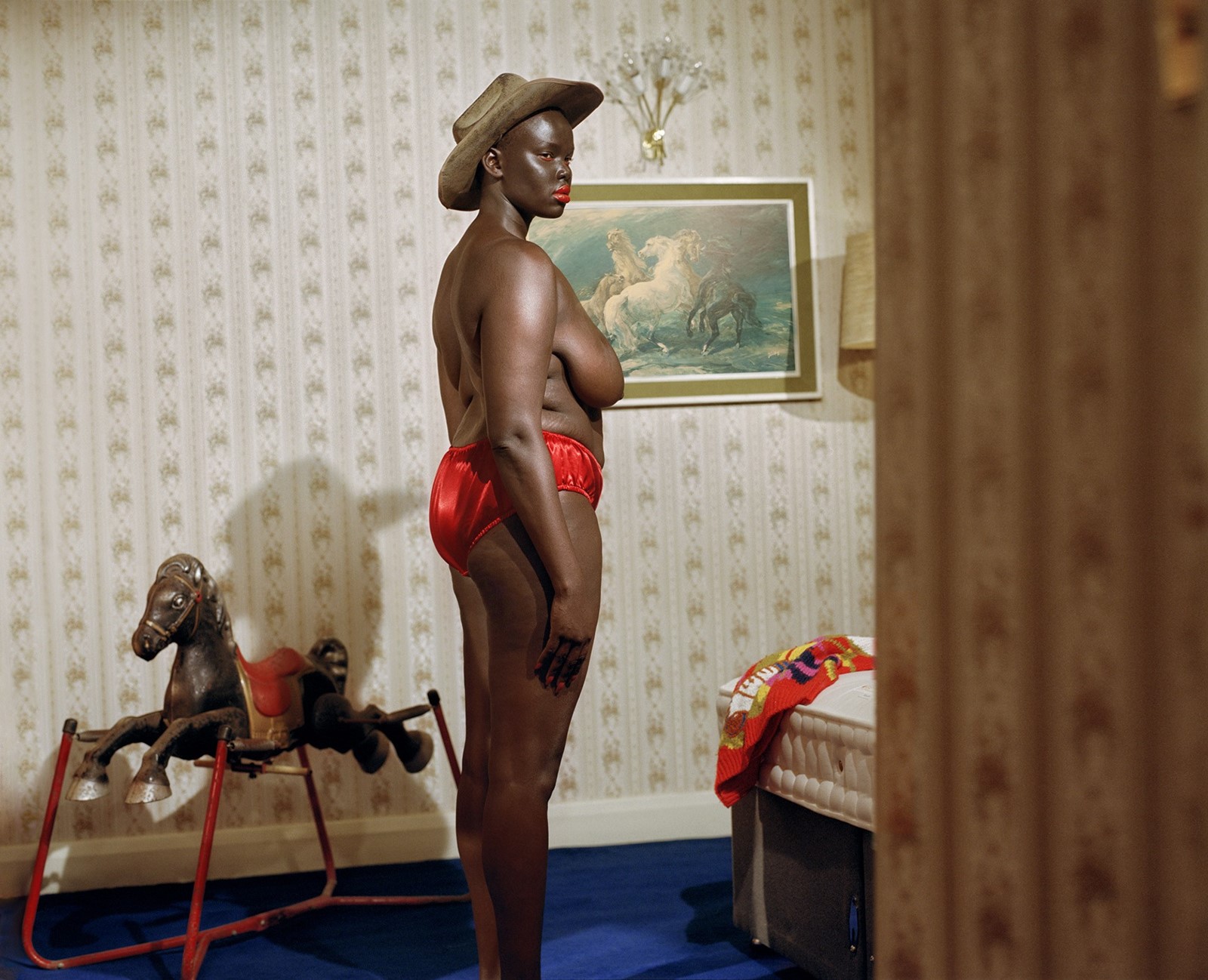
TS: That sense of understanding and empathy is also illustrated in your decision to pose for the book yourself. Can you tell me about the thought process behind this decision and what you hoped to achieve by doing this?
NLC: It made the project more personal, had I chosen not to pose it might have made the overall tone feel more voyeuristic as though I was looking inwards at this world, rather than us all looking out.
“Had I chosen not to pose it might have made the overall tone feel more voyeuristic as though I was looking inwards at this world, rather than us all looking out” – Nadia Lee Cohen
TS: In the pantheon of female representation in art and photography, what do you hope this body of work stands for; what do you hope it achieves?
NLC: An intertwining of honesty and fiction. Something that people can relate to whether emotionally or physically. I’d like there to be some longevity in the project, imagery in the contemporary world currently feels quite disposable and transient. For me, a photo book surpasses this and lives with the viewer a little longer, and might be something they pick up and look at again in years to come.

TS: What do you hope this project expresses about the lived experience of women today? What issues does it raise or confront the viewer with?
NLC: It is of course fictional, which ultimately leaves it up to the viewer’s subjective interpretation. However, even if these scenarios are imagined, they are ultimately based on truth and real life, there’s nothing fantastical there. They stand as a representation of strong femininity however the individual feels to embody that idea, and this will probably confront each viewer in a different way.
TS: The book ends on a sombre note, with a portrait of Elie Che, who tragically died last September. Can you tell me the story behind this image, your memory of Elie and why it felt right to include and conclude with this photograph of her?
NLC: There wasn’t a sadness to this image before Elie’s death, she wanted to pose this way as this is how she felt the most beautiful. Though now for me it has a particular poignancy. Her death came as such a sudden shock, her close friends and family reached out to ask that her photograph was released early to honour her memory. The battle for trans people is ongoing, to end with her portrait felt important – it’s not to be thought of as a conclusive ending, more of an ongoing conversation to highlight the reality of this struggle for trans people.
Women by Nadia Lee Cohen launches on December 9 2020 at Dover Street Market London, DSM E-Shop and online at ideanow.online.



